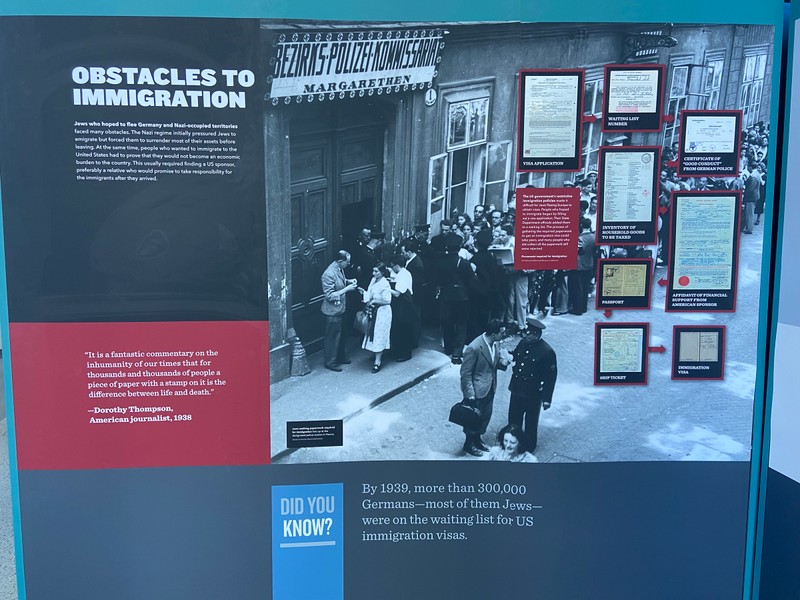Obstacles to Immigration
Introduction
Author-Uploaded Audio
Listen to a narration of this entry's description by Larry Johnson.
Text-to-speech Audio
The next section of the exhibition asks whether Americans helped Jewish refugees, and how the country responded to the refugee crisis. In the 1930s, as the Nazi persecution of European Jews worsened, hundreds of thousands of people applied to immigrate. People who wanted to immigrate had to add their name to a long waiting list. While waiting, they had to collect many different kinds of paperwork, including birth certificates, military discharge papers, tax documents, and had to pass a medical exam. It was an expensive and time-consuming process. Most also had to have an American financial sponsor, who had to submit evidence that they had enough money to support an immigrant during the Great Depression. You can see examples of some of these documents here. If an immigrant got to the front of the line, had all their paperwork in order, and passed an interview, they were granted an immigration visa and were allowed to leave for the United States.
Images

Backstory and Context
Text-to-speech Audio
Metropolitan Library System is one of 50 U.S. libraries selected to host AMERICANS AND THE HOLOCAUST, a traveling exhibition from the U.S. Holocaust Memorial Museum that examines the motives, pressures, and fears that shaped Americans’ responses to Nazism, war, and genocide in Europe during the 1930s and 1940s.
The Americans and the Holocaust exhibit will be on display at the Downtown Library, along with a series of related special events from Thursday, January 5 to Sunday, February 12.
Based on extensive new research of that period, Americans and the Holocaust addresses important themes in American history, exploring the many factors — including the Great Depression, isolationism, xenophobia, racism, and antisemitism — that influenced decisions made by the U.S. government, the news media, organizations and individuals as they responded to Nazism. This exhibition will challenge the commonly held assumptions that Americans knew little and did nothing about the Nazi persecution and murder of Jews as the Holocaust unfolded.
Drawing on a remarkable collection of primary sources from the 1930s and ’40s, the exhibition focuses on the stories of individuals and groups of Americans who took action in response to Nazism. It will challenge visitors to consider the responsibilities and obstacles faced by individuals — from Franklin Delano Roosevelt to ordinary Americans — who made difficult choices, sought to effect change, and, in a few cases, took significant risks to help victims of Nazism even as rescue never became a government priority.
Americans and the Holocaust was made possible by the generous support of lead sponsor Jeannie & Jonathan Lavine. Additional major funding was provided by the Bildners — Joan & Allen z”l, Elisa Spungen & Rob, Nancy & Jim; and Jane and Daniel Och. The Museum's exhibitions are also supported by the Lester Robbins and Sheila Johnson Robbins Traveling and Special Exhibitions Fund, established in 1990.
Sources
United States Holocaust Memorial Museum. Accessed January 5th, 2023. https://www.ushmm.org/.
American Library Association. Accessed January 5th, 2023. https://www.ala.org/.
